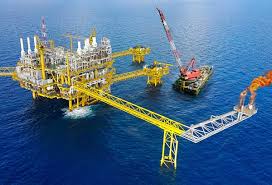Oil and Gas Exploration and Production in a Refinery
Oil and gas are the cornerstones of modern energy systems, driving industries, transportation, and daily life. The journey of these resources from deep within the Earth to their final form as fuels and products is a complex and highly technical process, beginning with exploration and ending with refined products ready for market. While refineries play a critical role in the later stages of this journey, they are also influenced by the upstream processes of exploration and production. Here’s a look at the entire process, from the search for oil and gas to their transformation into usable energy at the refinery.
1. Exploration
The process begins with exploration, the search for oil and gas deposits deep beneath the Earth’s surface. This is a challenging and high-stakes endeavor that requires advanced technology and expertise. Geologists and geophysicists use techniques such as seismic surveys, satellite imaging, and geochemical analysis to identify potential oil and gas reservoirs. Seismic surveys, for example, involve sending sound waves into the ground and analyzing how they reflect back to map underground formations.
Once a promising site is identified, exploratory drilling is conducted to confirm the presence of oil and gas. This drilling is a critical step, as it provides direct evidence of the quantity and quality of hydrocarbons in the reservoir. If the exploratory wells are successful, the site moves into the next phase: production.
2. Production
Production refers to the process of extracting oil and gas from the ground. After successful exploration, production wells are drilled to tap into the reservoir. The method of extraction depends on the type of reservoir and the properties of the oil or gas. For conventional oil, pressure within the reservoir often pushes the oil to the surface naturally. For harder-to-reach resources, enhanced recovery techniques such as water flooding, gas injection, or hydraulic fracturing (fracking) may be used.
Natural gas production often accompanies oil production, as gas can be found either in association with oil (associated gas) or in separate gas-only fields. Once extracted, the oil and gas are transported from the production site to refineries via pipelines, tankers, or trucks.
3. Transportation to the Refinery
The journey from the well to the refinery is an essential link in the supply chain. Crude oil and natural gas are transported through vast networks of pipelines or shipped via large tankers. In some cases, oil is temporarily stored in tanks before being sent to the refinery. Natural gas, on the other hand, is usually transported as a gas through pipelines, but can also be converted into liquefied natural gas (LNG) for easier shipment over long distances.
Once the raw materials arrive at the refinery, the real transformation begins.
4. Refining: The Transformation Process
At the refinery, crude oil and natural gas are transformed into refined products like gasoline, diesel, jet fuel, and chemicals. The refining process involves several complex steps, including:
- Distillation: Crude oil is heated and separated into different components, or fractions, based on boiling points.
- Conversion: Heavy fractions are broken down into lighter, more valuable products through processes like cracking and reforming.
- Treatment: Refined products are purified to remove impurities like sulfur and nitrogen.
- Blending: Final products are blended to meet specific quality and performance standards.
Natural gas, once processed at the refinery, is also used as a feedstock for the production of petrochemicals or further refined into liquefied petroleum gas (LPG) and other fuels.
5. Environmental Considerations
Oil and gas exploration, production, and refining have significant environmental impacts. Companies in the industry must adhere to strict regulations designed to minimize emissions, reduce waste, and protect ecosystems. Modern refineries are equipped with advanced technologies that allow for the capture of emissions, recycling of waste products, and the efficient use of energy. Additionally, ongoing research is focused on reducing the carbon footprint of the entire oil and gas supply chain, from exploration to production to refining.
Conclusion
The exploration, production, and refining of oil and gas are interconnected processes that are vital to the world’s energy supply. Each stage, from the initial search for underground resources to the final refining process, requires precision, technology, and a commitment to safety and sustainability. Refineries are the final step in this complex journey, transforming raw materials into the fuels and products that power our daily lives. Understanding the entire process highlights the intricate work behind every drop of fuel and every kilowatt of energy that comes from oil and gas.


